
How to Use Stepper Motor: Examples, Pinouts, and Specs
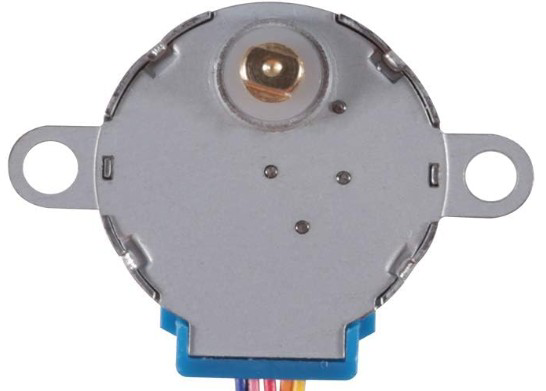
 Design with Stepper Motor in Cirkit Designer
Design with Stepper Motor in Cirkit DesignerIntroduction
A stepper motor is a type of electric motor that divides a full rotation into a large number of discrete steps. This allows for precise control of position, speed, and acceleration without requiring feedback systems. Stepper motors are widely used in applications where accurate positioning is critical, such as 3D printers, CNC machines, robotics, and camera platforms.
Explore Projects Built with Stepper Motor
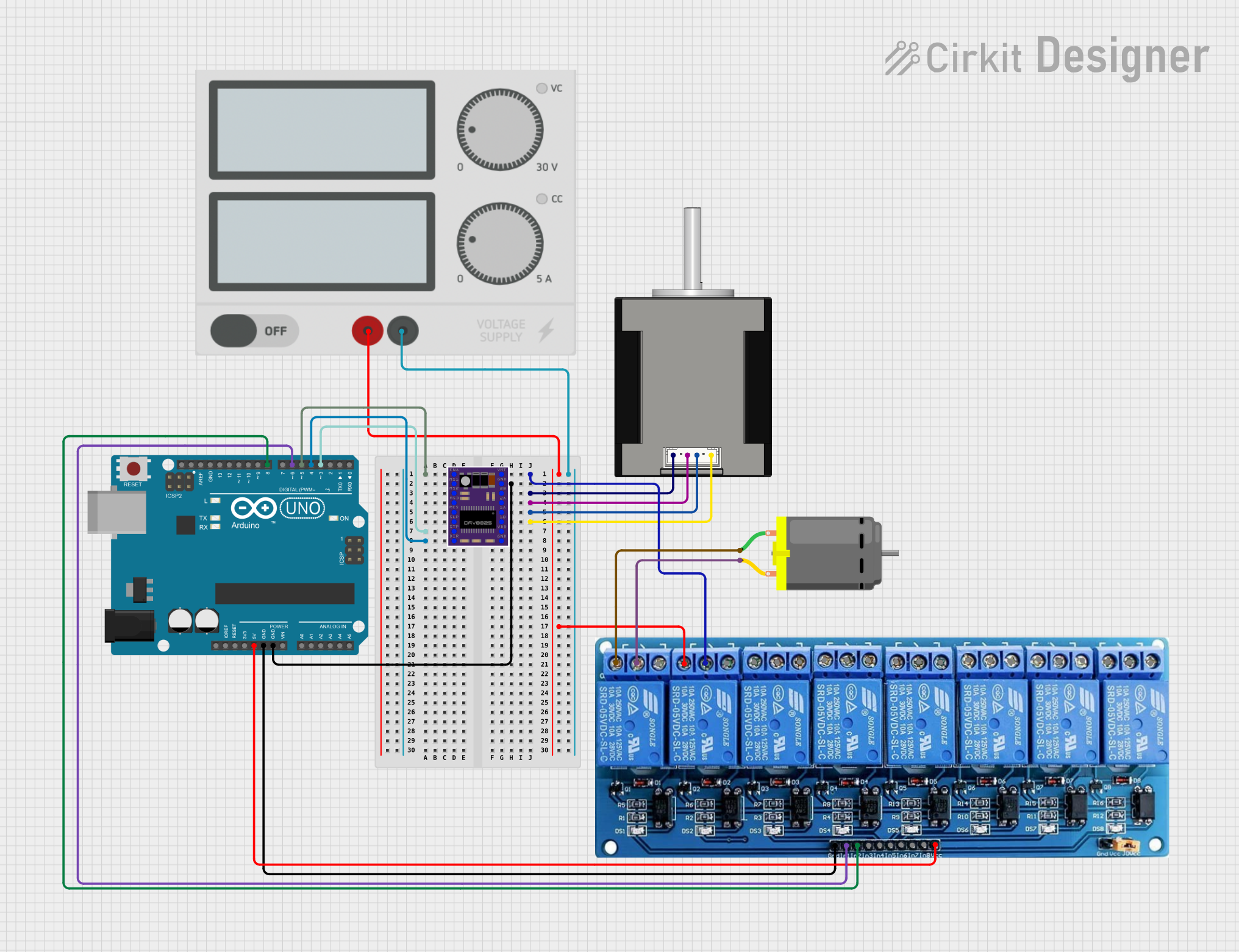
 Open Project in Cirkit Designer
Open Project in Cirkit Designer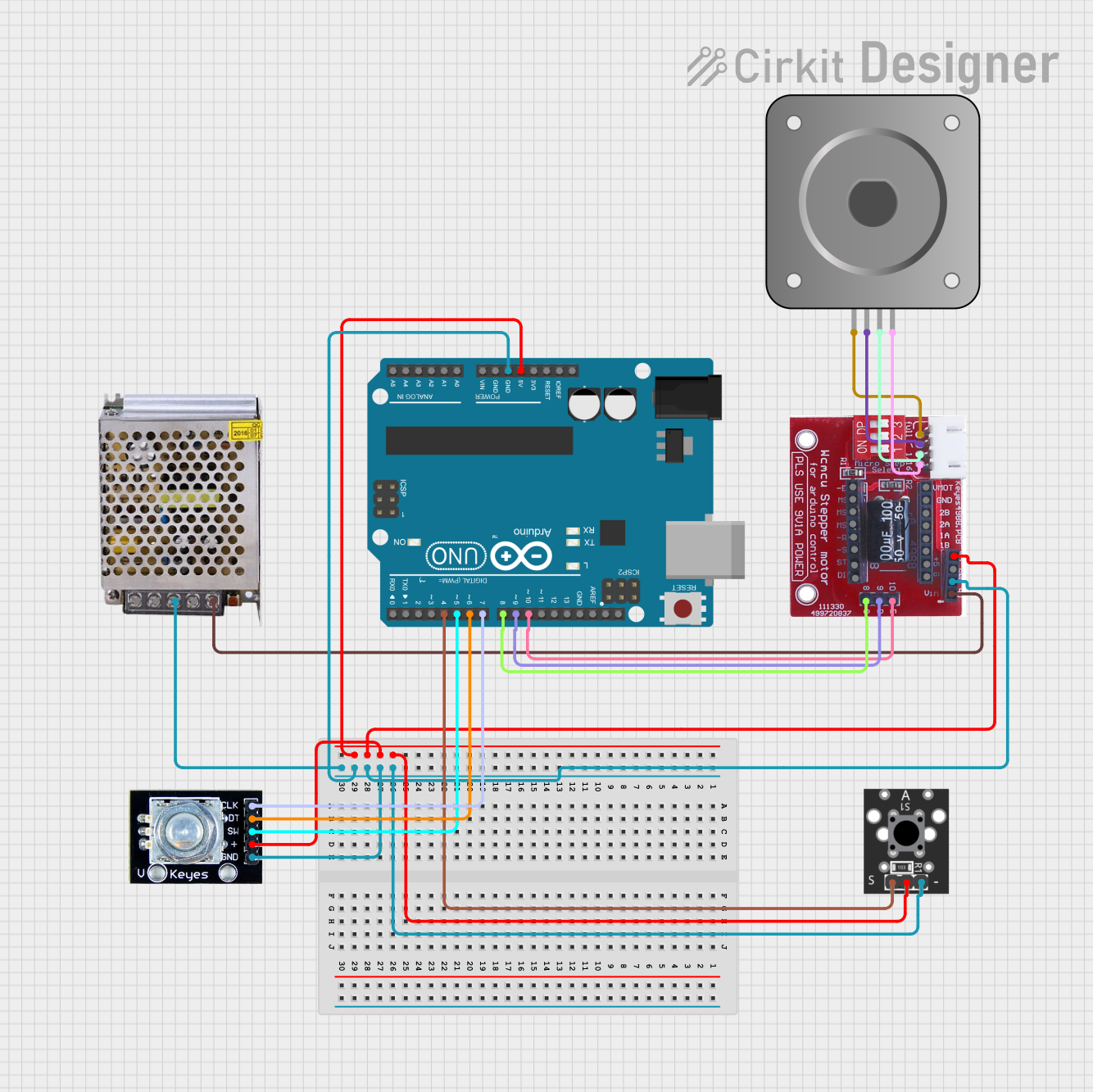
 Open Project in Cirkit Designer
Open Project in Cirkit Designer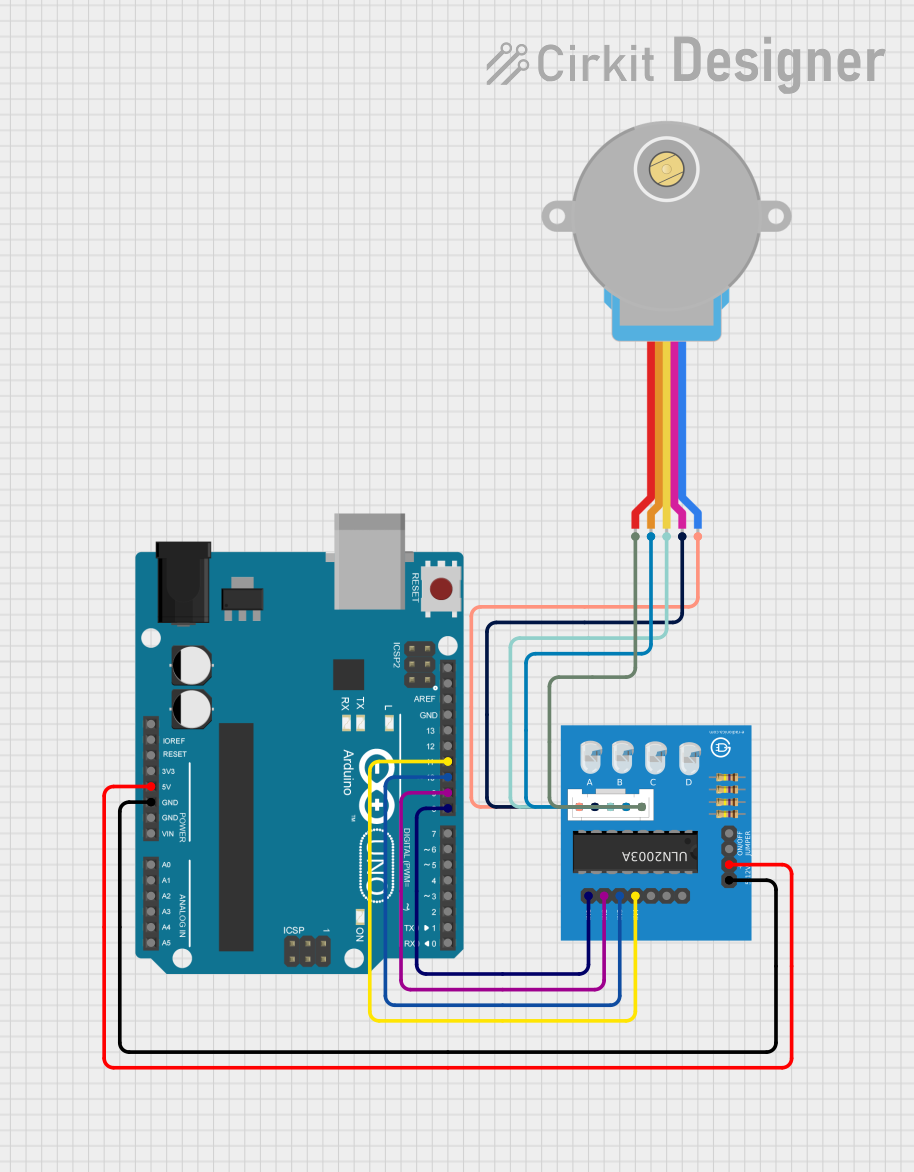
 Open Project in Cirkit Designer
Open Project in Cirkit Designer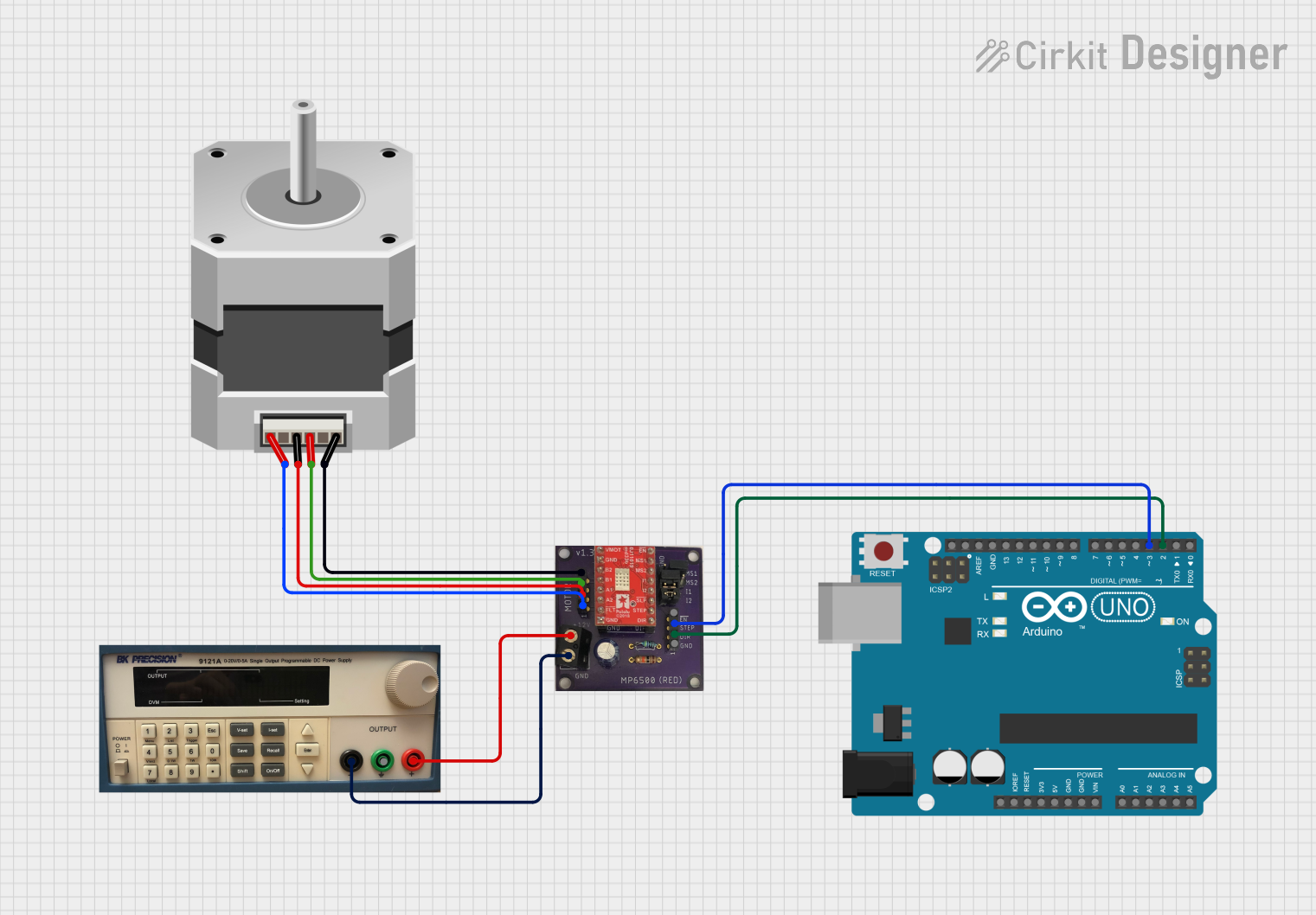
 Open Project in Cirkit Designer
Open Project in Cirkit DesignerExplore Projects Built with Stepper Motor

 Open Project in Cirkit Designer
Open Project in Cirkit Designer
 Open Project in Cirkit Designer
Open Project in Cirkit Designer
 Open Project in Cirkit Designer
Open Project in Cirkit Designer
 Open Project in Cirkit Designer
Open Project in Cirkit DesignerCommon Applications and Use Cases
- 3D Printers: For precise movement of the print head and build platform.
- CNC Machines: To control the position of cutting tools.
- Robotics: For controlling robotic arms and wheels.
- Camera Sliders: For smooth and accurate motion in photography and videography.
- Automated Systems: In conveyor belts, pick-and-place machines, and more.
Technical Specifications
Below are the general technical specifications for a typical stepper motor. Note that specific models may vary, so always refer to the datasheet of your motor.
Key Technical Details
- Operating Voltage: 5V to 12V (common range; some models may support higher voltages)
- Current Rating: 0.5A to 2A per phase
- Step Angle: 1.8° (200 steps per revolution) or 0.9° (400 steps per revolution)
- Holding Torque: 0.1 Nm to 2 Nm (varies by model)
- Number of Phases: Typically 2 (bipolar) or 4 (unipolar)
- Drive Type: Bipolar or unipolar
- Wiring: 4, 5, 6, or 8 wires depending on the motor type
Pin Configuration and Descriptions
The pin configuration depends on the type of stepper motor (bipolar or unipolar). Below is a general guide:
Bipolar Stepper Motor (4 Wires)
| Pin Number | Wire Color (Typical) | Description |
|---|---|---|
| 1 | Red | Coil A Positive Terminal |
| 2 | Blue | Coil A Negative Terminal |
| 3 | Green | Coil B Positive Terminal |
| 4 | Black | Coil B Negative Terminal |
Unipolar Stepper Motor (6 Wires)
| Pin Number | Wire Color (Typical) | Description |
|---|---|---|
| 1 | Red | Coil A Positive Terminal |
| 2 | Blue | Coil A Negative Terminal |
| 3 | Yellow | Center Tap for Coil A |
| 4 | Green | Coil B Positive Terminal |
| 5 | Black | Coil B Negative Terminal |
| 6 | White | Center Tap for Coil B |
Usage Instructions
How to Use the Stepper Motor in a Circuit
- Choose a Driver Module: Stepper motors require a driver module to control the current and sequence of pulses. Common drivers include the A4988, DRV8825, or ULN2003.
- Connect the Motor to the Driver:
- For a bipolar motor, connect the two coils to the driver outputs.
- For a unipolar motor, connect the coils and center taps as specified in the driver documentation.
- Power the Motor and Driver: Ensure the power supply matches the motor's voltage and current requirements.
- Control the Motor: Use a microcontroller (e.g., Arduino UNO) to send step and direction signals to the driver.
Important Considerations and Best Practices
- Current Limiting: Set the current limit on the driver to prevent overheating the motor.
- Power Supply: Use a power supply with sufficient current capacity to avoid voltage drops.
- Step Resolution: Configure the driver for full-step, half-step, or microstepping as needed.
- Heat Management: Ensure proper ventilation or heat sinks for the motor and driver.
Example: Controlling a Stepper Motor with Arduino UNO
Below is an example of controlling a bipolar stepper motor using an A4988 driver and Arduino UNO.
// Include the Stepper library for easy motor control
#include <Stepper.h>
// Define the number of steps per revolution for your motor
#define STEPS_PER_REV 200
// Initialize the Stepper library with the motor's step pin connections
Stepper stepper(STEPS_PER_REV, 8, 9, 10, 11);
// Pins 8, 9, 10, 11 are connected to the motor driver
void setup() {
// Set the motor speed (in RPM)
stepper.setSpeed(60); // 60 RPM
Serial.begin(9600);
Serial.println("Stepper Motor Test");
}
void loop() {
// Rotate the motor one full revolution clockwise
Serial.println("Rotating clockwise...");
stepper.step(STEPS_PER_REV);
delay(1000); // Wait for 1 second
// Rotate the motor one full revolution counterclockwise
Serial.println("Rotating counterclockwise...");
stepper.step(-STEPS_PER_REV);
delay(1000); // Wait for 1 second
}
Notes:
- Adjust the
STEPS_PER_REVvalue to match your motor's step angle. - Ensure the motor driver is properly configured for your motor's current rating.
Troubleshooting and FAQs
Common Issues and Solutions
Motor Not Moving:
- Check the wiring between the motor, driver, and microcontroller.
- Ensure the power supply is connected and providing sufficient voltage/current.
- Verify the step and direction signals from the microcontroller.
Motor Vibrates but Doesn't Rotate:
- Check the coil connections; they may be swapped or incorrectly wired.
- Ensure the step sequence is correct for your motor type.
Motor Overheating:
- Reduce the current limit on the driver.
- Use a heat sink or fan for cooling.
Inconsistent or Jerky Movement:
- Verify the microstepping configuration on the driver.
- Ensure the power supply is stable and not dropping voltage.
FAQs
Q: Can I run a stepper motor without a driver?
A: No, stepper motors require a driver to control the current and step sequence. Directly connecting the motor to a power source will not work.
Q: How do I determine the wiring of an unknown stepper motor?
A: Use a multimeter to identify the coils. Measure resistance between wires; wires with the lowest resistance belong to the same coil.
Q: What is microstepping, and why is it useful?
A: Microstepping divides each full step into smaller steps, improving smoothness and precision. It is especially useful in applications requiring fine control.
Q: Can I use a stepper motor for high-speed applications?
A: Stepper motors are not ideal for high-speed applications due to torque drop-off at higher speeds. Consider using a DC or servo motor instead.